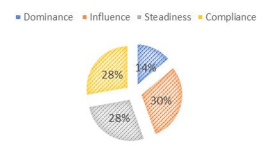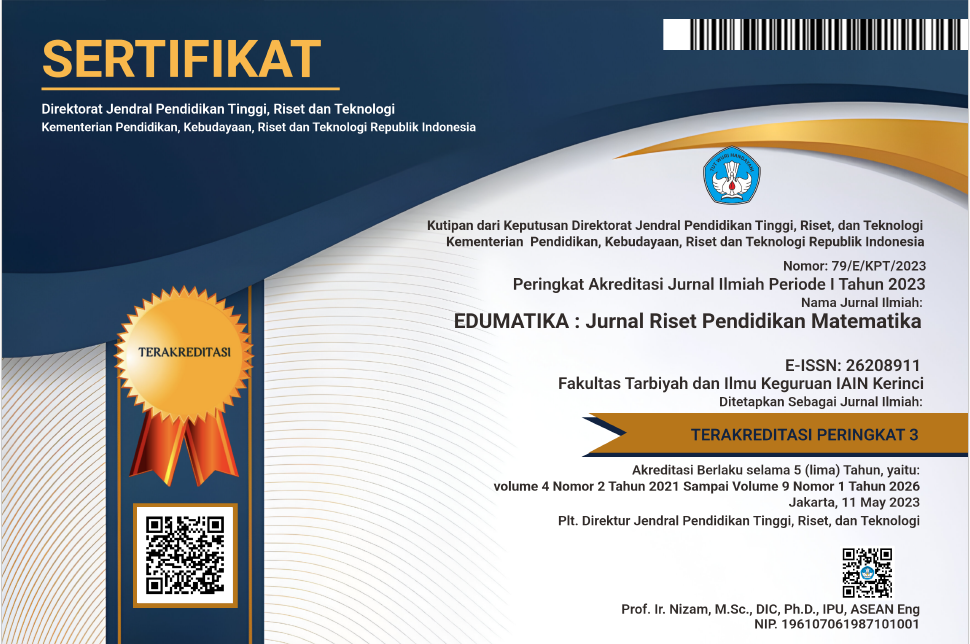The Students' Numeracy Problem-Solving Skills Based on DISC Personality Type
Abstract
Differences in personality types significantly influence learning processes and outcomes, including problem-solving skills. This research aims to describe numeracy problem-solving skills among eleventh-grade students in the science group, focusing on the DISC personality types. The study, conducted in Kediri, West Java, Indonesia, involves two representatives for each personality type. The research utilizes the DISC personality test by William Moulton Marston, a numeracy problem-solving assessment consisting of three problems, and an interview guideline. Data accuracy is ensured through source and technique triangulation, along with member-checking to validate interview results. The findings reveal that students with dominance personality types generally follow a four-step numeracy problem-solving process, occasionally skipping the re-checking step for specific questions. Influence personality types also exhibit a four-step approach to numeracy problem-solving. In contrast, students with steadiness personalities accurately describe four levels of problem-solving to achieve correct results. Compliance personality types, while adhering to a four-step process, encounter inaccuracies in certain problem solutions. In summary, students with different personality types consistently undergo a four-step numeracy problem-solving process, but variations arise in the final outcomes of problem-solving.
Downloads

Copyright (c) 2023 Yeni Aprilia Astika Sari, Dewi Hamidah, Noer Hidayah

This work is licensed under a Creative Commons Attribution 4.0 International License.














